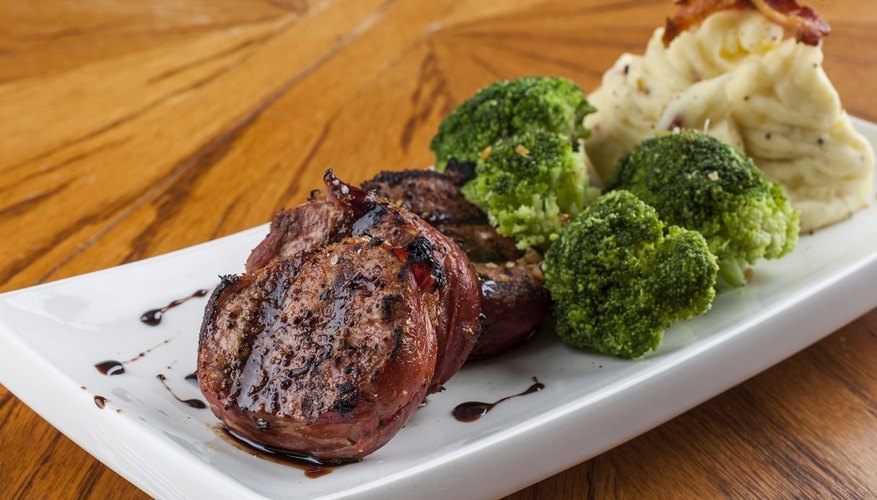Cuts of beef come in a variety of shapes and sizes. Their location and function on the animal has a profound influence on the texture and flavour of the beef. The most tender and highly sought cut of beef is the tenderloin, from which beef medallions are cut.
- Cuts of beef come in a variety of shapes and sizes.
- The most tender and highly sought cut of beef is the tenderloin, from which beef medallions are cut.
British and American English
The main difference you'll find when talking about cuts of meat is the Atlantic divide!
Identification
Beef medallion is an American name for what is more commonly called filet mignon. The French term means “small fillet.” It is also known worldwide as filet de bœuf, tenderloin steak and fillet steak.
Features
True beef medallions are cut only from the small end of the beef tenderloin. Because this is not a weight-bearing muscle in the cow, the meat remains extremely tender.
Types
American butchers tend to call any cut of the tenderloin a fillet mignon or beef medallion. Porterhouse and T-bone steaks include both a beef medallion and a strip steak on opposite sides of a bone.
Size
Beef medallions are 2.5 to 5cm (1 to 2 inches thick), and 5 to 8cm (2 to 3 inches) in diameter, though true fillet mignon is often less than 2.5cm (1 inch) in diameter when taken from the very tail end of the tenderloin. A typical fillet mignon weighs between 170 to 230gr (6 to 8 ounces).
Preparation
Most commonly, beef medallions are grilled at high heat that sears the outer surface while keeping the interior tender. Medallions can also be pan-fried, for which a strip of bacon is sometimes wrapped around the circumference.
